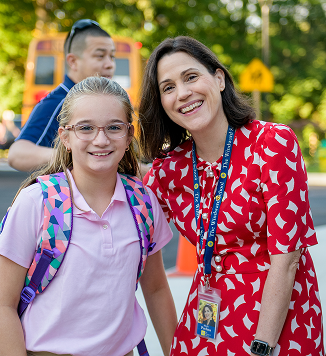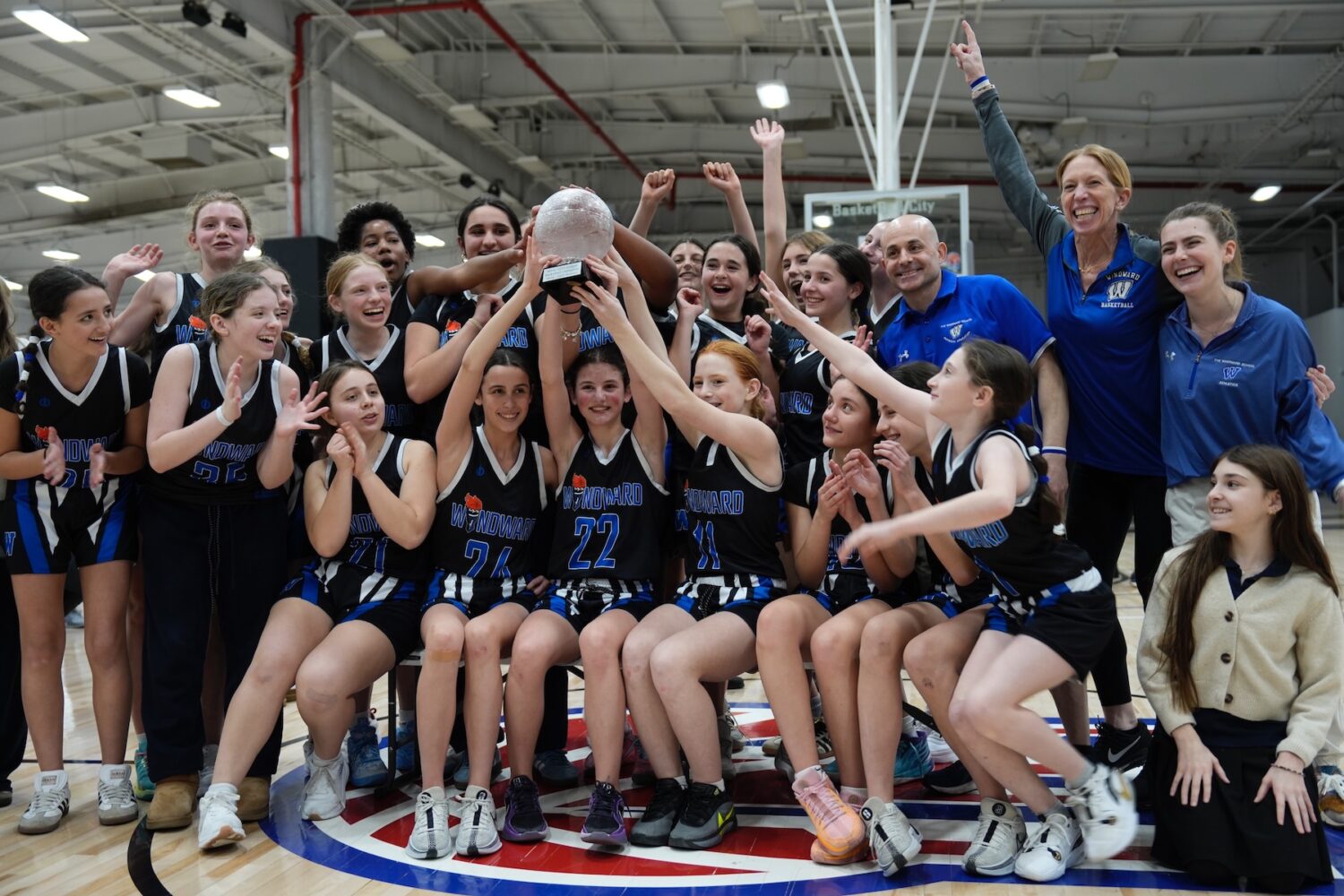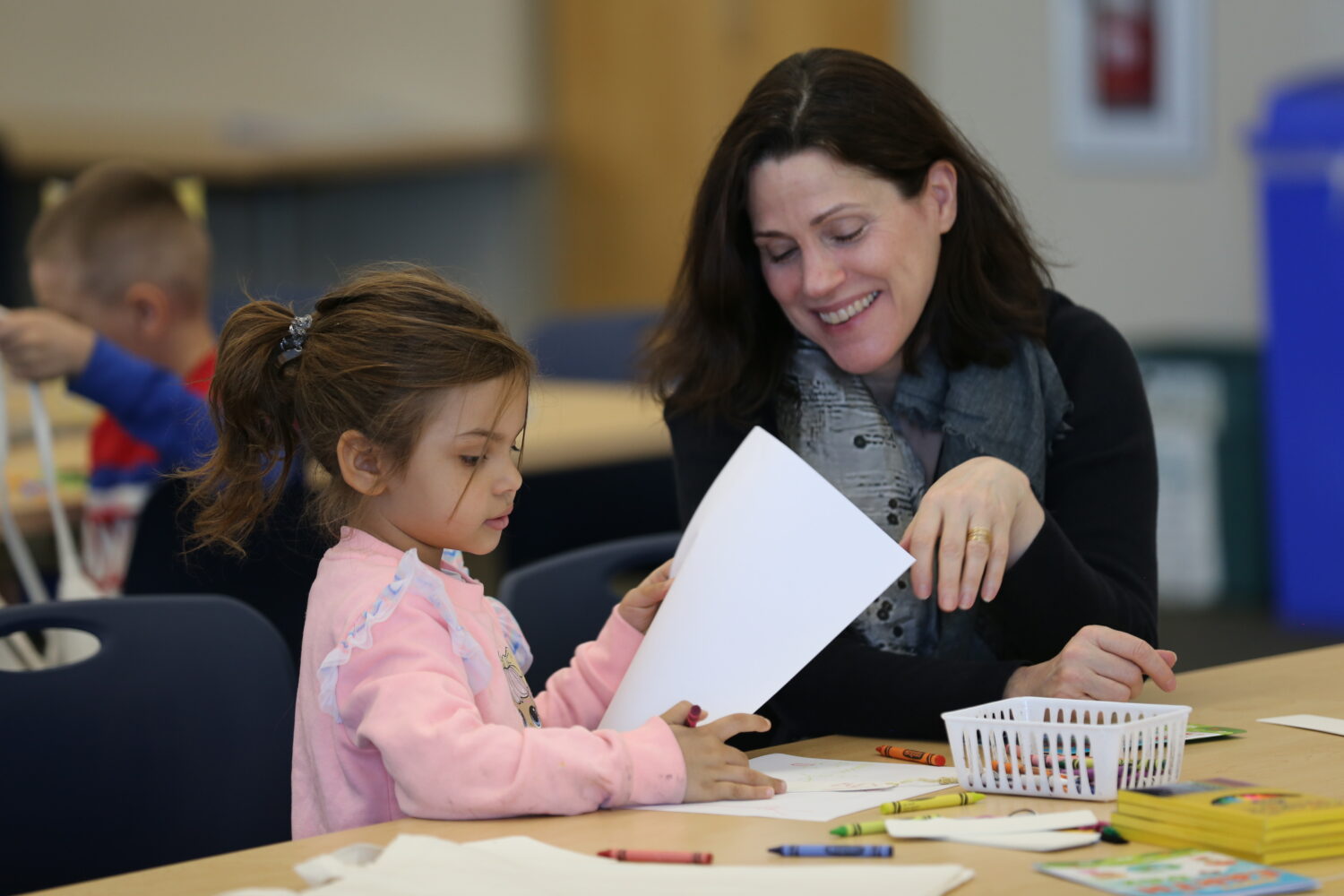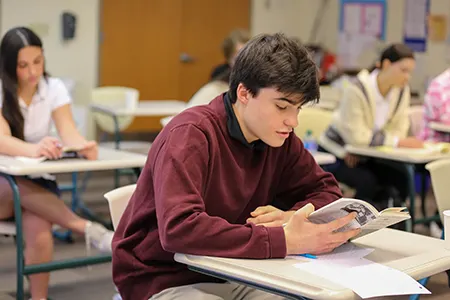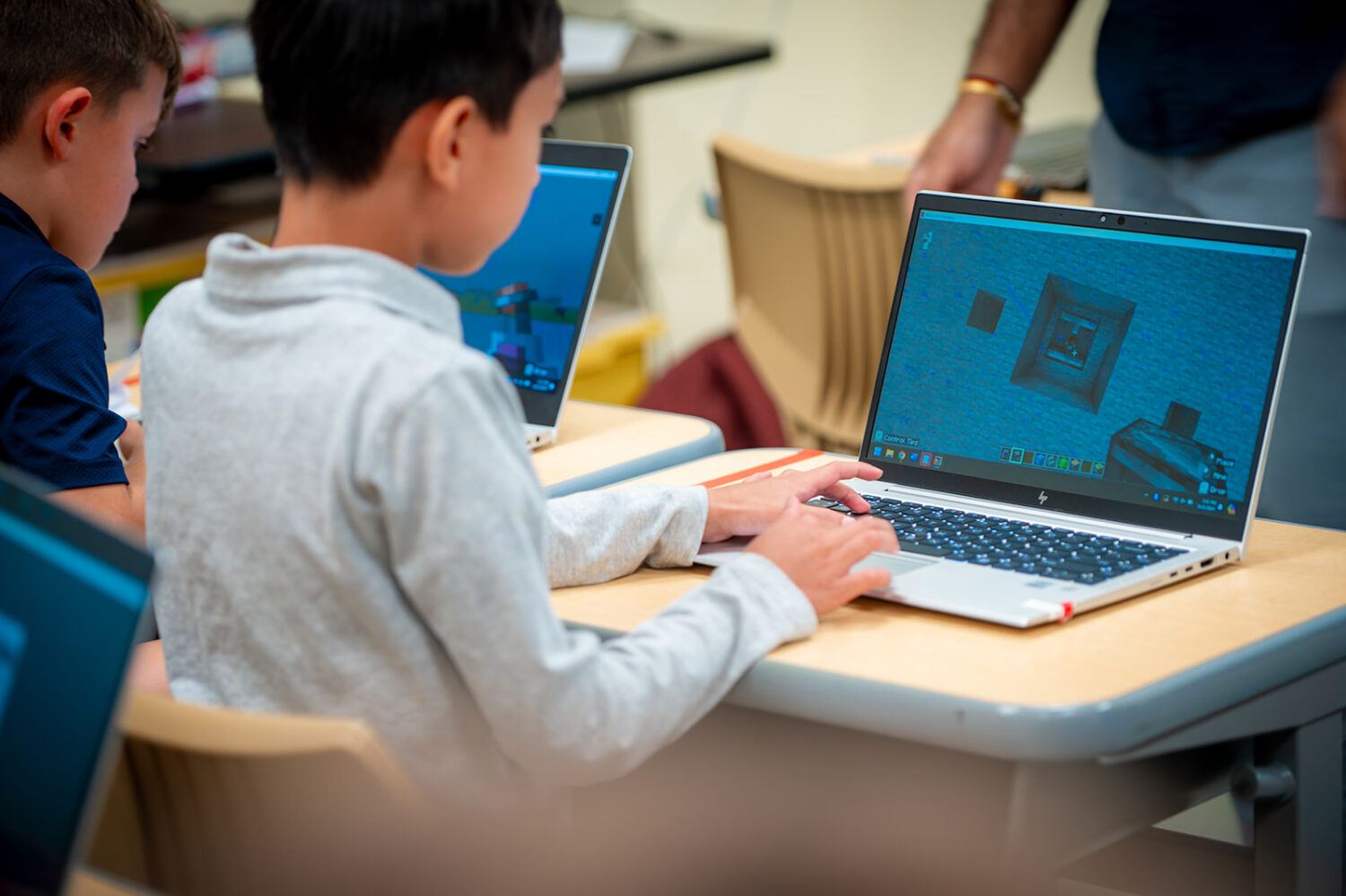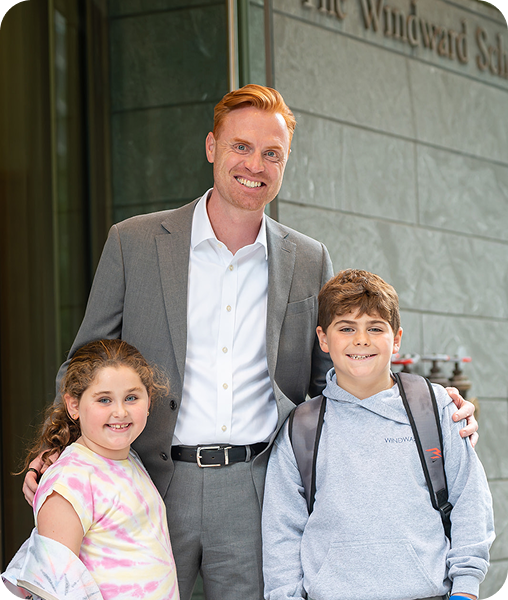Educators hold the paramount responsibility to create a learning environment that broadens our students’ language and worlds. It is vital that all schools address the research and implications of the role of language in the learning process.
A special kind of beauty exists which is born in language, of language, and for language.
– Gaston Bachelard, Philosopher
The Windward School’s Manhattan campus is located on East 93rd Street on the Upper East Side. To get to campus each morning, I walk from my apartment in the Upper West Side neighborhood through Central Park. When I describe this commute to colleagues, my words embody the joy and reverence I feel toward this daily journey. It is in these moments when I reflect on the beauty and power that language holds to construct the human narrative and intensify our emotions surrounding life’s experiences.
Educators use language in schools as an integral tool to help students make meaning of their world and shape their academic and social experiences. When I started working at The Windward School, a school that educates students with dyslexia and language-based learning disabilities, I realized that I had previously underestimated my influence and responsibility as a teacher to use language to empower my students. My former classroom experiences at Windward deepened my understanding of the relationship between language and my students’ understanding of the world around them. Philosopher Ludwig Wittgenstein captured the power of language when he posited, “The limits of my language means the limits of my world.”
Educators use language in schools as an integral tool to help students make meaning of their world and shape their academic and social experiences.
If Wittgenstein was alive today, I’d offer a “yes, and” to his original assertion based on my former teaching experiences at Windward. Yes, the limits of our language can signify the limits of our world. Without language, it is simply impossible to navigate, construct, and make sense of the world around us. And, for students with language-based learning disabilities like dyslexia and developmental language disorders, the limits of their classroom world can and often do impose limits to their understanding and expression of language.
Students with language disorders demonstrate diverse strengths and distinct needs and challenges in language and reading. Even though decades of research across numerous disciplines demonstrate that early identification and evidence-based instruction mitigate and support their language and reading challenges, this instruction is not universally implemented in schools. Consequently, millions of children continue to experience reading and academic failure because their instructional environments, including the language of classroom, limit the potential of their language abilities, and therefore, their academic and personal success. Nicole Patton Terry, PhD, Director of the Florida Center for Reading Research, illustrates the rates of reading failure in our daily lives: “Every single one of us knows a child who is struggling with reading. It may be your child. It might be a child you seen next door in your community. It may even be you” (Mason, 2021).
Educators hold the paramount responsibility and power to create a learning environment that broadens our students’ language and worlds. For the prosperity of all students, it is vital that all schools and classrooms address the research and classroom implications of these three questions:
- What is the role of language in our curriculums and classroom environments?
- How are students using language during the learning process, especially learners who present with language impairments and challenges?
- How do teachers leverage effective language practices that meet every child where they are and empower their potential?
The Complexity of Language in School
What is the role of language in our curriculums and classroom environments?
Language has a universal and complex role in our schools, curriculums, and classrooms. It mediates the academic and social environment of every classroom, but language does not characterize as a “one-size-fits-all” component of the school day. In addition, language is both integrated into and transcends beyond any curriculum, “core” program, and content area. Many factors within schools can influence the variability of the environment as well as the learning and social experience. Language, however, is universal, and it is the consistent driving similarity across any grade, subject area, or school. Lydia Soifer, PhD, a faculty member of The Windward Institute and language pathologist (2018), synthesizes language in the classroom, “”The challenge of teaching about language is that language itself is the vehicle for learning.”
Various educational and psychological disciplines emphasize the importance of language on learning. For example, cognitive psychologists cite that language is a fundamental part of cognitive development, whereas social cognitive theory maintains that learning occurs within a language-driven social context (Bandura, 1986; Bruning, Schraw & Norby, 2011). Furthermore, sociocultural theorists posit that social interaction plays a major role in cognition where language shapes learning (Vygotsky, 1978). Research in reading development shows that a strong language system is essential for reading and academic success.
Research in reading development shows that a strong language system is essential for reading and academic success.
Language in any medium provides a time-oriented, interactive roadmap for giving and receiving information, understanding social patterns, and operating individually and with others (Soifer, 2018). At the simplest level, we understand language as spoken (i.e., oral) and written (i.e., reading and writing). Given that language has evolved across the history of humanity, language cross-culturally is based in both rules and patterns as well as specific nuances and exceptions (Hogan & Adlof, 2019). Language is also characterized by distinct components of form, content, and use (Bloom & Lahey, 1978; Hogan, 2020; Soifer, 2018, 2021):
- Form includes elements of language structure such as (1) letters, words, and parts of words, (2) sentences, syntax, and grammar, and (3) narrative and compositions.
- Content encompasses the substance of language, a component that necessitates a strong level of comprehension, background knowledge, and schema (Catts, 2018, Bruning et al., 2011).
- Use refers to the social conventions of language (Bloom & Lahey, 1978; Hogan, 2020; Soifer, 2018, 2021).
How do these characteristics translate into classroom instruction? Language involves every aspect of time and space within instruction and the classroom environment. The way teachers speak to students including the vocabulary they use, the structure of their sentences, rate of speech, wait time, tone, can impact the ways in which children engage in classroom discourse. Similarly, effective language captures the degree to which teachers understand the diverse characteristics of their children related to their strengths, needs and deficits, strengths, as well their differences (i.e., linguistic and cultural). Understanding that language mediates teacher-student and student-student relationships captures the complexity of how language is used in classrooms.
Language and Literacy for Students with Difficulties
How are students using language during the learning process, especially learners who present with language impairments and challenges?
Considering the fundamental components of language, we must now consider how students, especially those with language-based learning disabilities, use language in classroom discourse as well as during the reading and writing process. Students with language-based learning disabilities, like developmental language disorders and dyslexia, may have difficulty processing, organizing, and retaining large amounts of information; executing multi-step directions; or learning new vocabulary. In addition, they may require questions or statements rephrased or scaffolded, the use of graphic organizers and outlines, and multisensory instructional supports (Archibald, n.d.). Soifer (2018) explains that children who struggle with language may have difficulties with other cognitive and social processes like executive functioning.
While written language and spoken language maintain a similar relationship, written language contains distinct characteristics. Maryanne Wolf (2008) posits that humans are innately wired for spoken language, yet we “were never born to read. Human beings invented reading only a few thousand years ago.” The nature of how readers interact with written, recorded language is different from how we engage with spoken words (Soifer, 2018). This fundamental feature of written language holds vast implications for how we teach reading:
- When someone endorses programs that are grounded in Whole Language, they are subscribing to the fundamental idea that reading is learned naturally. That is simply not true. It is well-documented across bodies of research that reading must be explicitly taught (Defining Movement, 2021).
- Since features of oral and written language are similar, language and literacy learning begin before a child ever receives formal classroom instruction (Adler & Hogan, 2019; Soifer, 2018).
- As children learn to read words and comprehend connected text, there are interdependent skills and abilities needed to acquire reading proficiency in decoding, language, and reading comprehension. As outlined in the Scarborough Reading Rope (Scarborough, 2001), skill building in these areas should facilitate automaticity at the word level and strategy at the comprehension level.
These implications are increasingly pressing for students with language impairments and reading difficulties. Hogan and Adler (2019) explain the relationship between language development and later reading outcomes. Specifically, early oral language skills have been shown to predict later reading and academic performance. In fact, many students who demonstrate later reading challenges such as in comprehension, have in fact shown risks at an earlier age (Preston et al., 2010). The key to identifying later reading problems, therefore, is to understand the mechanisms and markers of early language difficulties.
The key to identifying later reading problems, therefore, is to understand the mechanisms and markers of early language difficulties.
However, schools are not resourced to adequately identify and remediate these early deficits (Hogan & Adler, 2019). Unfortunately, NAEP data continues to point to reading failure throughout the country, while other statistics show widespread disparities in diagnosis of developmental language disorders and related language-based learning disabilities (Hogan & Adler, 2019). The answer to addressing these problems is comprehensive; it requires better screening and intervention, support across systems, and a clear understanding of how language underpins these efforts across all developmental ages and content areas.
What to Do Now: Effective Language Use in Schools
How do teachers leverage effective language practices that meet every child where they are and empower their potential?
The extensive research on language and reading offers clear directions forward to support our students. Paul Riccomini, PhD, faculty member at The Windward Institute and associate professor of mathematics at Pennsylvania State University, attests, “If students don’t understand the language of instruction, they’re not going to be able to learn what you intend to teach.” Dr. Riccomini’s statement powerfully summarizes the insights and implications for school leaders and teachers of students in every content area.
Insights for School Leaders
- Acknowledge. Understanding the importance of language requires the acknowledgement that both teachers and administrators in the school may not have been adequately prepared in learning about the research on language and reading instruction at the pre-service level.
- Invest. Evidence-based language instruction extends beyond a “packaged program” or curriculum. Therefore, implementing this instruction throughout the school requires an investment in time and resources that cohesively maintain the nature of effective instruction that is explicit, structured, and sequential at the word level through higher language skills and strategies. These investments do not require a broad overhaul of resources. Instead, leaders can leverage a distributed leadership approach by integrating the language and instructional expertise within their school building.
- Prioritize learning. Schools need to increase access to research-based professional development that teach about (1) knowledge of language structures; (2) language development of children; (3) language-based learning disabilities; (4) screening, assessment, and instructional practices.
Learning should also embed time for planning, practice, low-stakes observation, and collaboration. There should be a shared expectation and understanding of the time required for planning of language in lessons. Coaching and observations from experts in language should not only focus on the lesson structure but how language is maximized to support all students.
Insights for Teachers
- Discern. Effectively integrating language into classroom instruction requires a deliberate understanding and discernment about the structure of language and our students. One way to start is by understanding the relationship between the components of language such as the facets of form, content, and use. Discernment also involves clear behaviors that meet students where they are. Wide bodies of research illuminate how the ways in which teachers use language to facilitate a sense of belonging, especially for diverse learners, is vital to their learning.
- Acknowledge. Language shapes the social and academic environment, and the role of teachers can never be underestimated. When we acknowledge the incredible power and responsibility that teachers possess to chart the language experience in the classrooms, we can carefully map the resources needed to support this journey.
- Act proactively and responsively. Ben Franklin timelessly declared that if you “fail to plan, you plan to fail.” A powerful way to increase the impact of lesson planning is to pre-plan the language of the lesson. This strategy can work across any content area or grade level. Pre-planning moments to clarify vocabulary or syntax as well as writing questions and comments in advance to monitor comprehension are just a few of the numerous research-based strategies to maximize language in the classroom. Practice refining skills in language like providing additional prompts, questions, scaffolds, feedback, or wait time for students struggling to master a concept or skill.
- Strive to learn more. To be in the teaching profession is to be in the continuous pursuit of growth and mastery. Understanding and applying language in our classrooms requires acknowledgement, opportunity, and investment to learn more. This article provided just a few strategies to increase the intentionality and impact of classroom language to support reading development. Ultimately, building teaching skills, self-efficacy, and knowledge, involves continued learning, practice, enactment, and reflection as teachers continue to shape student outcomes (Clarke & Hollingsworth, 2002).
Philosopher Gaston Bachelard illuminates the limitless world of language: “A special kind of beauty exists which is born in language, of language, and for language.” By leveraging the power of language and capitalizing on research-based techniques to support our students’ learning, we unlock the beauty of the world that exists within our spoken and written word for all students to live out their potential.
For Further Learning:
The scope of this topic cannot be justifiably captured into a single article, so I encourage all readers to review the selection of current resources for further learning:
Read
- “Oral Language Development and Relationship to Literacy” by Lydia H. Soifer. In Multisensory Teaching of Basic Language Skills (Birsh & Carreker, 2018)
- Chapter 3 “Oral Language Development and Relationship to Literacy,” Lydia H. Soifer
Listen
- READ Podcast episodes with Lydia Soifer, Tiffany Hogan, and Indigo Young. Listen to READ Podcasts here.
Visit
- DLD and Me
- FCRR Resource Database
- International Dyslexia Association
- Haskins Global Literacy Hub Resource Library
Attend Live
Inclusive Language Instruction with Indigo Young, MS, CCC-SLP
Thursday, April 28 from 4 – 6 p.m.
In this workshop from The Windward Institute, Indigo Young will discuss language instruction through an anti-oppressive lens. Participants will learn specific strategies to address the needs of linguistically diverse students, including English Language Learners and dialect speakers, as well as strategies to create inclusive classrooms for all.

